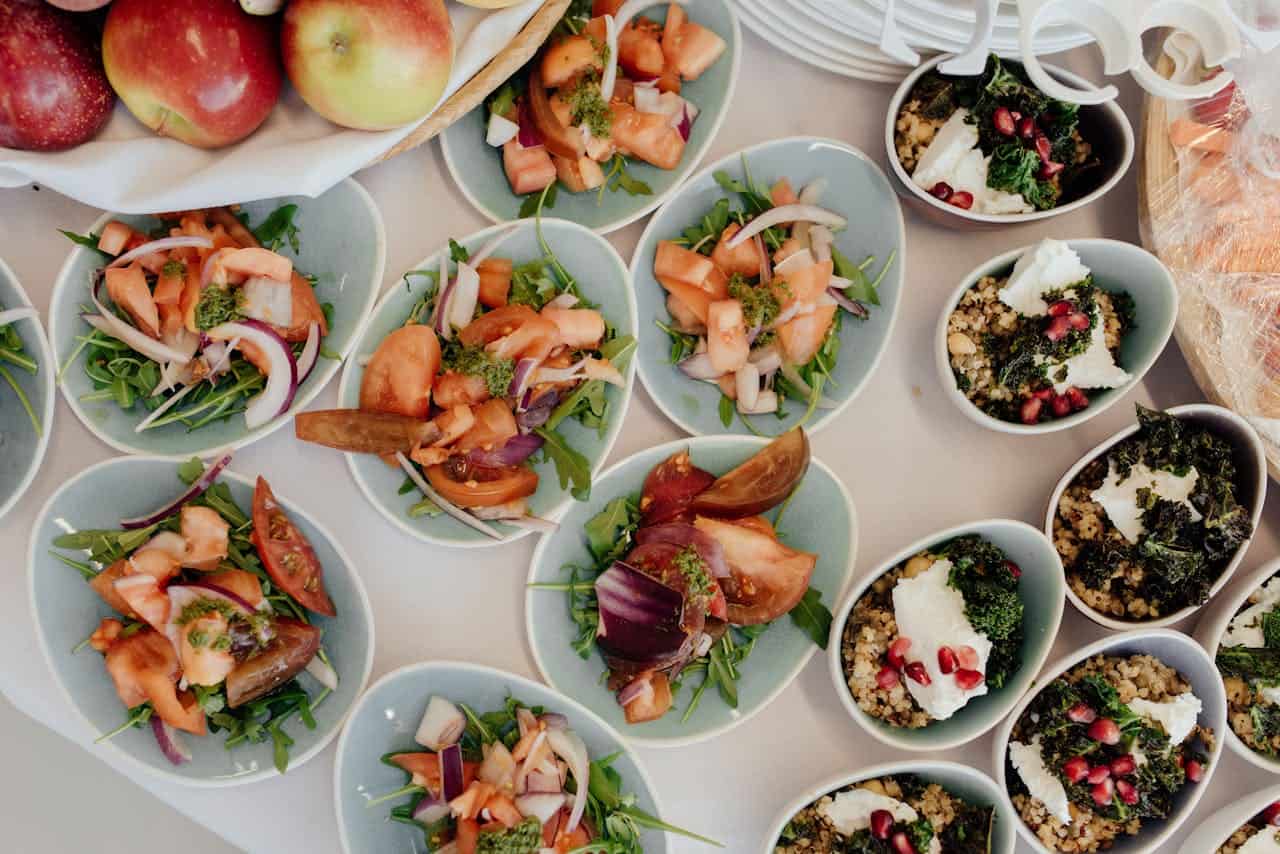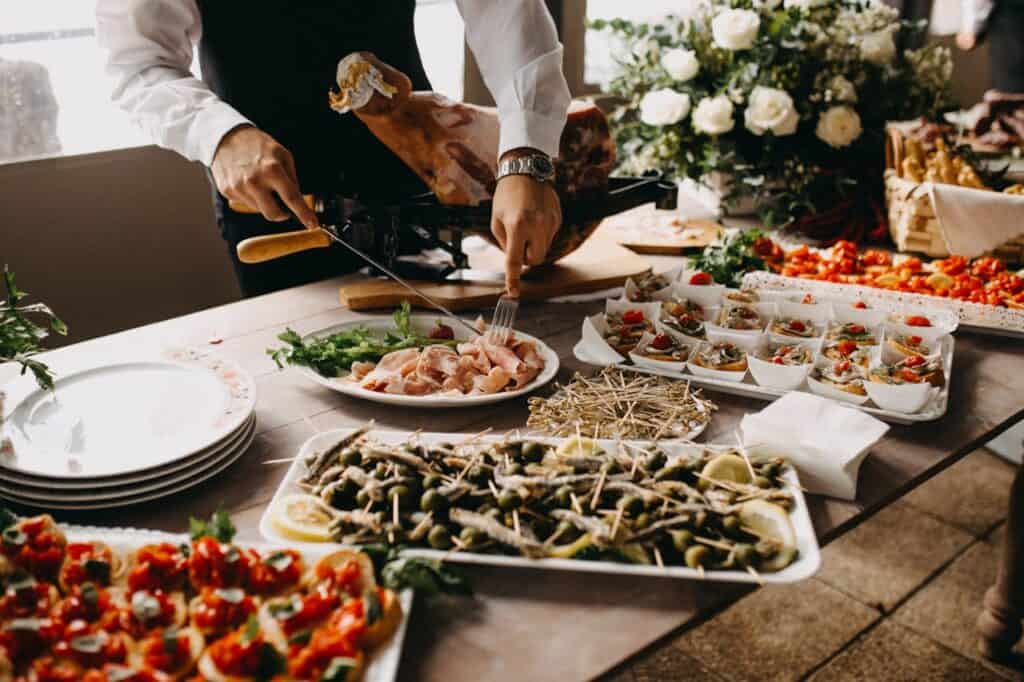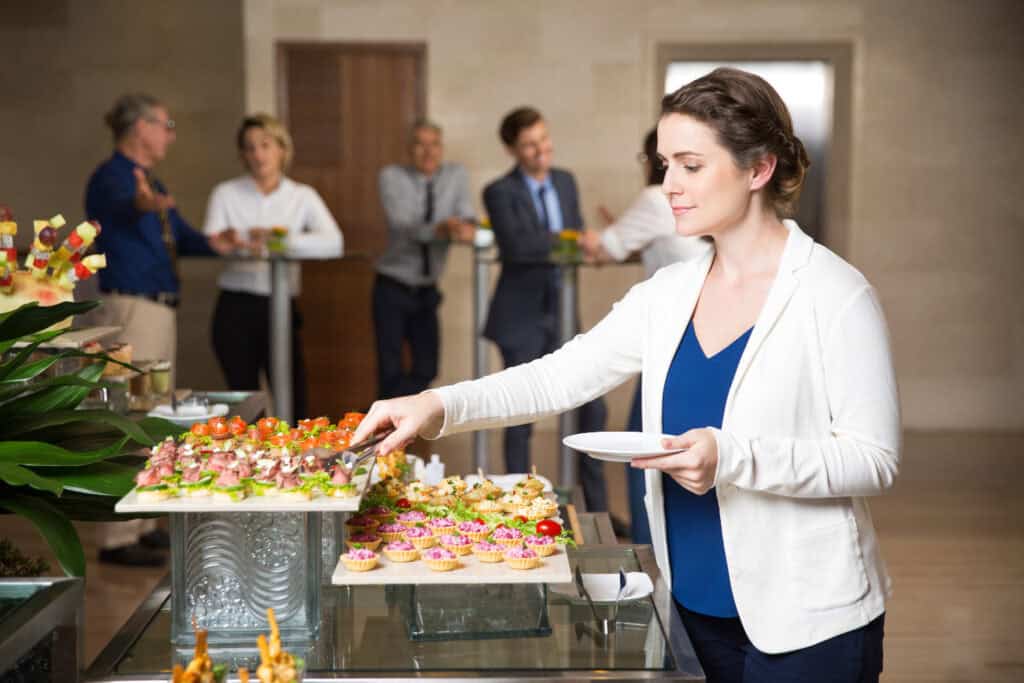
By Jermaine Thomas January 3, 2025
Catering goes beyond merely providing food; it is an artistic skill that turns meals into exceptional experiences. Regardless of whether it’s a wedding, business function, or small gathering, catering can transform any event into a memorable experience. In this article, we delve into the essence of catering, offering insights into how it crafts memorable meals and distinct catering experiences for all occasions.
Understanding the Essence of Catering Art
At its core, the art of catering lies in understanding the needs and preferences of clients and crafting menus that go beyond expectations. It involves more than just cooking; it’s about presenting food in a way that aligns with the theme and ambiance of the event. The catering art blends culinary expertise with visual appeal to create a holistic dining experience.
Caterers collaborate with clients to understand their tastes, dietary needs, and event objectives. For instance, a wedding might need a sophisticated, multi-course dinner, whereas a corporate gathering could require small hors d’oeuvres for convenient socializing. Tailoring is essential in this area, guaranteeing each dish enhances the event’s overall atmosphere.
Presentation also plays a critical role. A beautifully plated dish, a well-decorated buffet table, or even the layout of a dessert station can elevate the dining experience. Add to this the use of fresh, seasonal ingredients, and you have a recipe for unforgettable meals. Skilled caterers know that the true essence of catering art lies in creating memorable, sensory-rich experiences that leave a lasting impression.

Crafting Unique Catering Experiences
Unique catering experiences distinguish a great caterer from a good one. These experiences stem from innovation, creativity, and attention to detail. From themed menus to interactive food stations, there are countless ways to make an event special.
One of the most popular trends is live cooking stations. Guests can watch chefs prepare dishes on the spot, adding an interactive and entertaining element to the event. This not only enhances the freshness of the food but also engages attendees, making the meal a focal point of the gathering.
Themed menus provide an additional avenue to present something distinctive. For example, a party with a tropical theme might include dishes inspired by Hawaiian and Caribbean flavors, along with exotic cocktails and fruit arrangements. Focusing on these details fosters a unified and engaging experience that connects with visitors.
Furthermore, personalized touches, such as monogrammed desserts, signature drinks, or culturally significant dishes, can make an event feel truly special. It’s these unique catering experiences that transform a meal into a cherished memory.
The Role of Ambiance in Unforgettable Meals
While food is central to catering, ambiance plays an equally important role in creating unforgettable meals. Lighting, décor, music, and table settings work together to set the mood and elevate the overall dining experience.
Imagine a candlelit dinner with soft jazz playing in the background versus a brightly lit hall with upbeat music. Both create completely different vibes, suitable for different occasions. The art of catering involves tailoring the ambiance to complement the menu and the event’s purpose.
The decor can vary from simple sophistication to lavish arrangements. Floral designs, dining items, and the hues present in the arrangement enhance the event’s visual appeal. For outdoor gatherings, string lights, vintage furniture, and natural features such as wood and plants foster a delightful ambiance.
Additionally, the staff’s presentation and service style significantly impact the ambiance. Polished, professional, and friendly service ensures that guests feel welcome and attended to, further enhancing the meal’s memorability. A well-coordinated ambiance is a cornerstone of the catering art, ensuring that every element contributes to an unforgettable experience.
The Importance of Customization and Flexibility
Every event is unique, and so are its catering needs. The ability to adapt to different requirements is a hallmark of great caterers. Customization and flexibility allow caterers to cater (pun intended) to diverse audiences, ensuring every guest’s needs are met.
For instance, dietary restrictions and preferences are increasingly important in today’s catering industry. Vegan, gluten-free, and allergy-conscious options must be seamlessly integrated into the menu. This inclusivity not only satisfies all guests but also reflects positively on the host.
Flexibility goes beyond just food. Changes at the last minute, weather-related issues for outdoor activities, or unanticipated guest counts are frequent obstacles. Expert caterers manage these situations gracefully, making sure that the event goes off without a hitch despite unexpected issues.
Ultimately, the art of catering thrives on adaptability. By offering tailored solutions and maintaining a problem-solving mindset, caterers ensure that every meal is as unforgettable as the event itself.
How Technology Enhances Catering Art
Technology has become an integral part of modern catering, enhancing both efficiency and creativity. From menu planning to event execution, technological tools have transformed the way caterers operate.
For example, digital menu design tools allow clients to visualize their selections, making the planning process more collaborative. Advanced cooking equipment enables precision in preparation, ensuring consistent quality across large-scale events. Similarly, inventory management software helps caterers track ingredients and reduce waste.
Social media and digital platforms also have an essential role. Caterers can display their offerings, draw in clients, and even secure bookings via websites and applications. Broadcasting events live and providing real-time updates can greatly enrich the distinctive catering experience, allowing both hosts and guests to revisit unforgettable moments.
By integrating technology, caterers can focus more on the creative aspects of their craft, elevating the overall quality of their services. Technology thus complements the catering art, making unforgettable meals and experiences more accessible to all.
Sustainability in Catering: A Modern Necessity
Sustainability is no longer just a trend; it’s a necessity in today’s catering industry. Eco-conscious clients are increasingly seeking services that align with their values, and caterers are rising to the occasion.
Sustainable catering focuses on obtaining local, organic, and seasonal produce to minimize the carbon footprint. It also highlights reducing waste by implementing careful menu planning and utilizing biodegradable or reusable serving items. Caterers can enhance their impact by collaborating with local farmers and producers, fostering community support while guaranteeing freshness.
Additionally, innovative solutions like composting food waste, using energy-efficient cooking methods, and donating leftovers to shelters showcase a commitment to sustainability. These practices not only benefit the environment but also enhance the reputation of the caterer.
Incorporating sustainability into the catering art demonstrates a forward-thinking approach, ensuring that every meal not only delights the palate but also respects the planet.

Creating Lasting Impressions Through Catering
The ultimate goal of the catering art is to create lasting impressions. This involves a seamless blend of all elements—food, presentation, ambiance, customization, and service.
An event that goes well has attendees discussing the experience well after it concludes. Whether it’s the flavor of an exquisitely prepared meal, the imagination of a themed arrangement, or the kindness of diligent service, every aspect adds to the overall experience. Caterers who make an extra effort to amaze and please their guests frequently make a lasting impression.
Moreover, following up with clients to seek feedback and express gratitude can strengthen relationships and lead to repeat business. These personal touches underline the human aspect of catering, reminding clients that their satisfaction is at the heart of the service.
By focusing on creating unique catering experiences and unforgettable meals, caterers can ensure that their craft leaves a mark on every event they serve.
Conclusion
Catering is genuinely an art, combining cooking talents with creativity, flexibility, and a profound insight into human relationships. By embracing the craft of catering, industry professionals can convert meals into memorable experiences, making each event a treasured recollection.